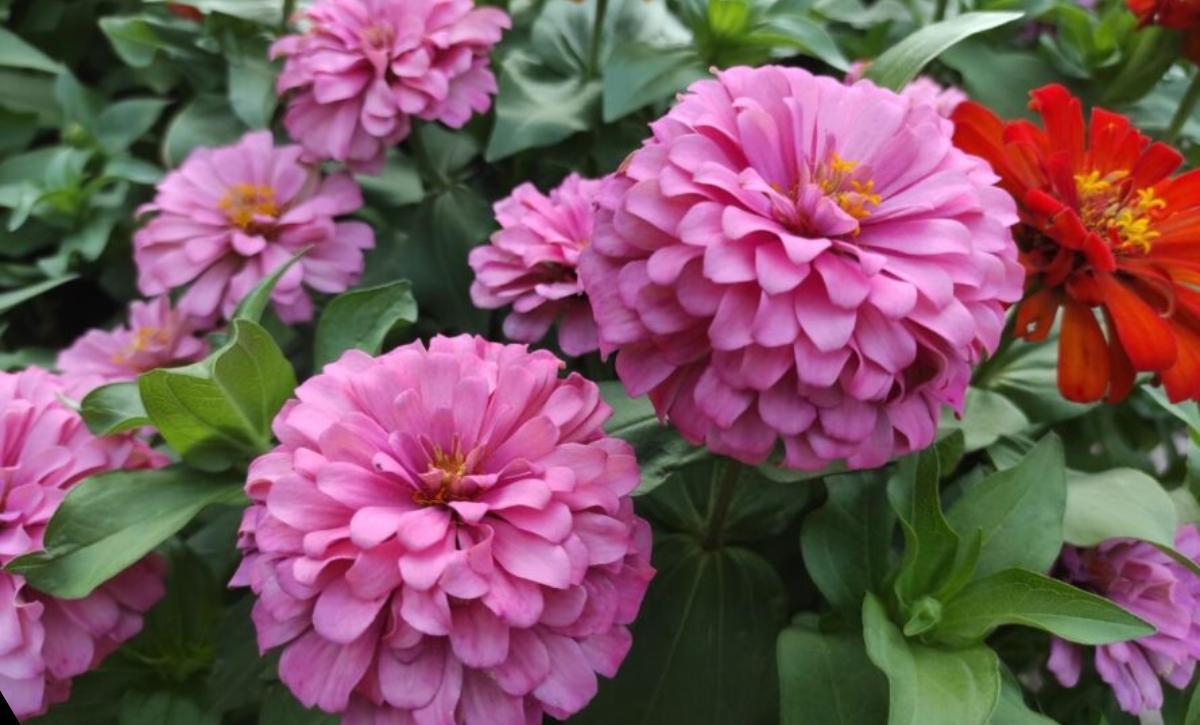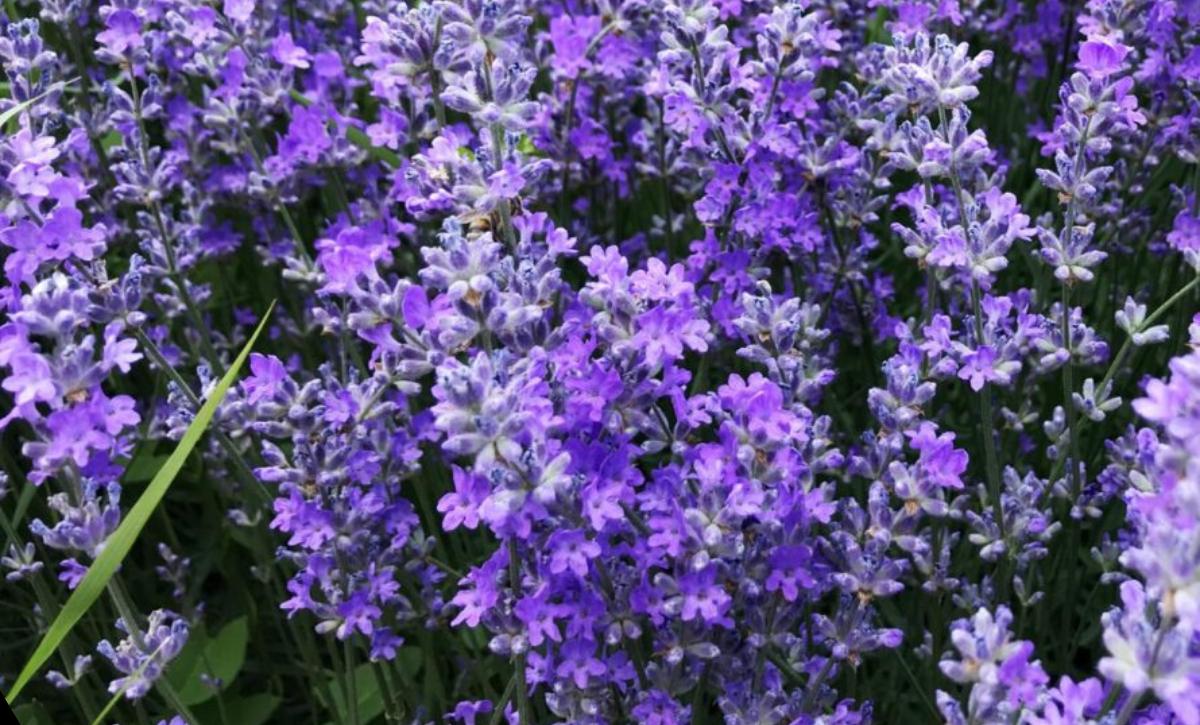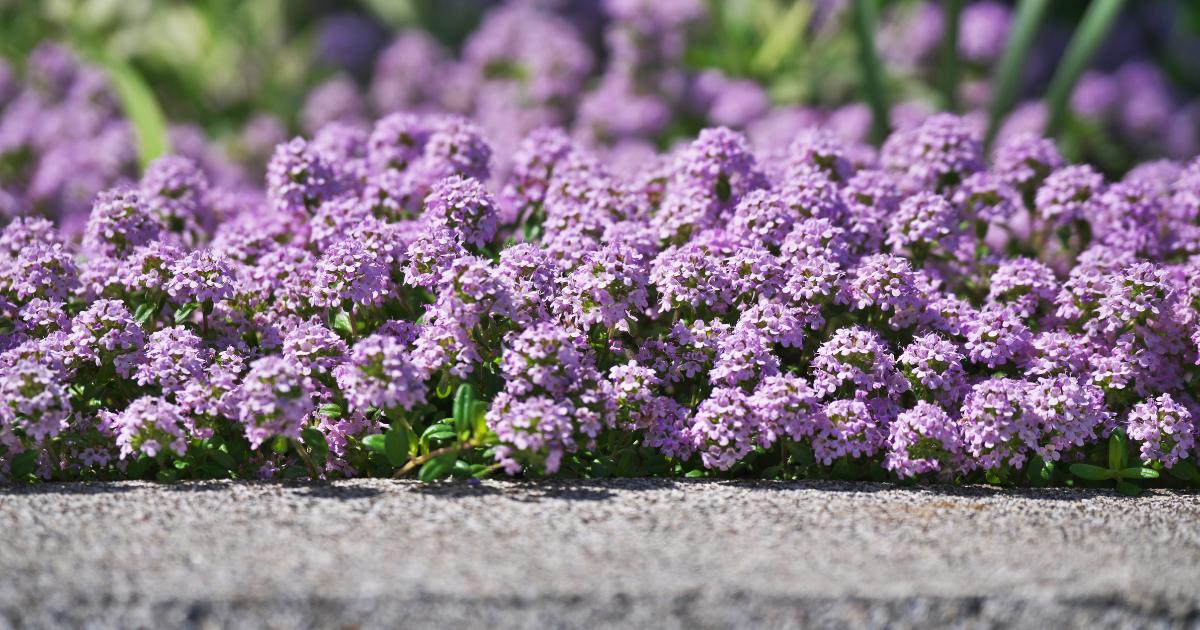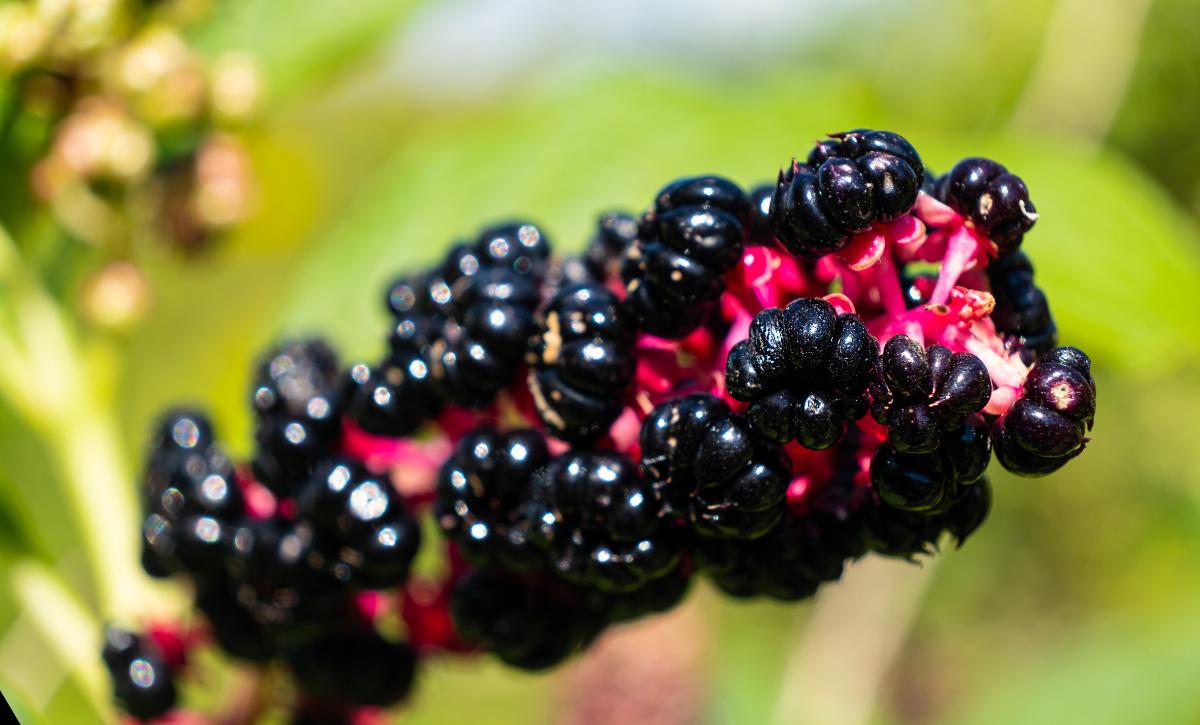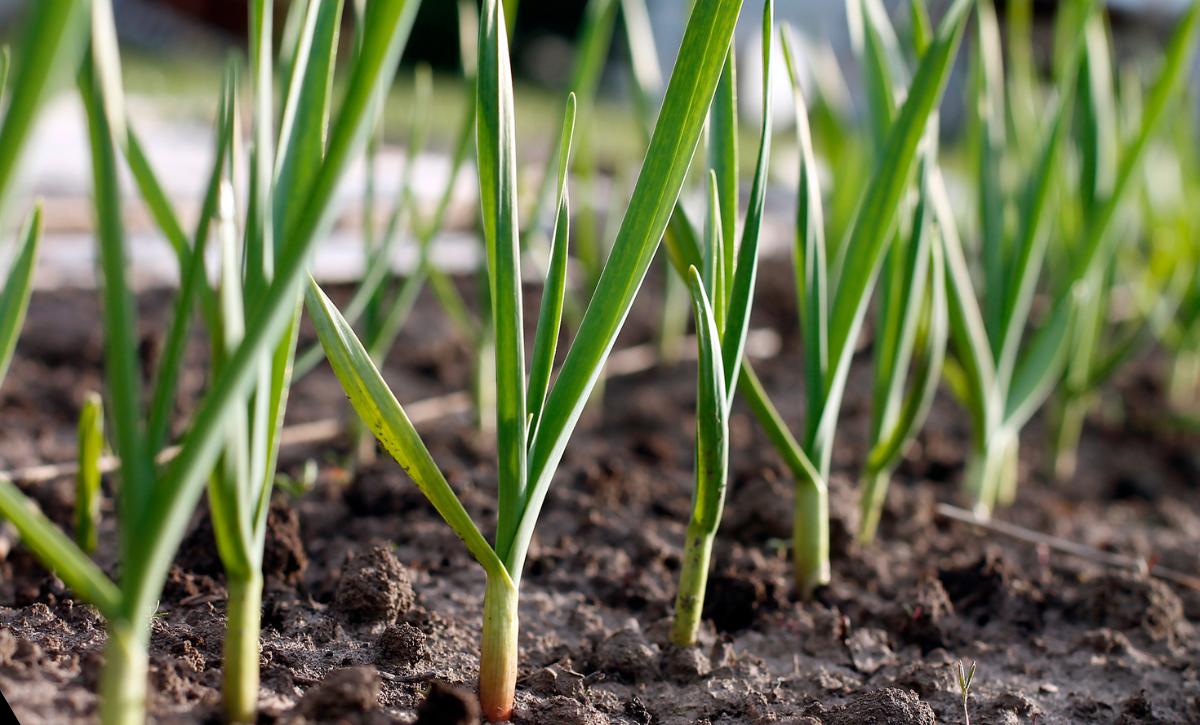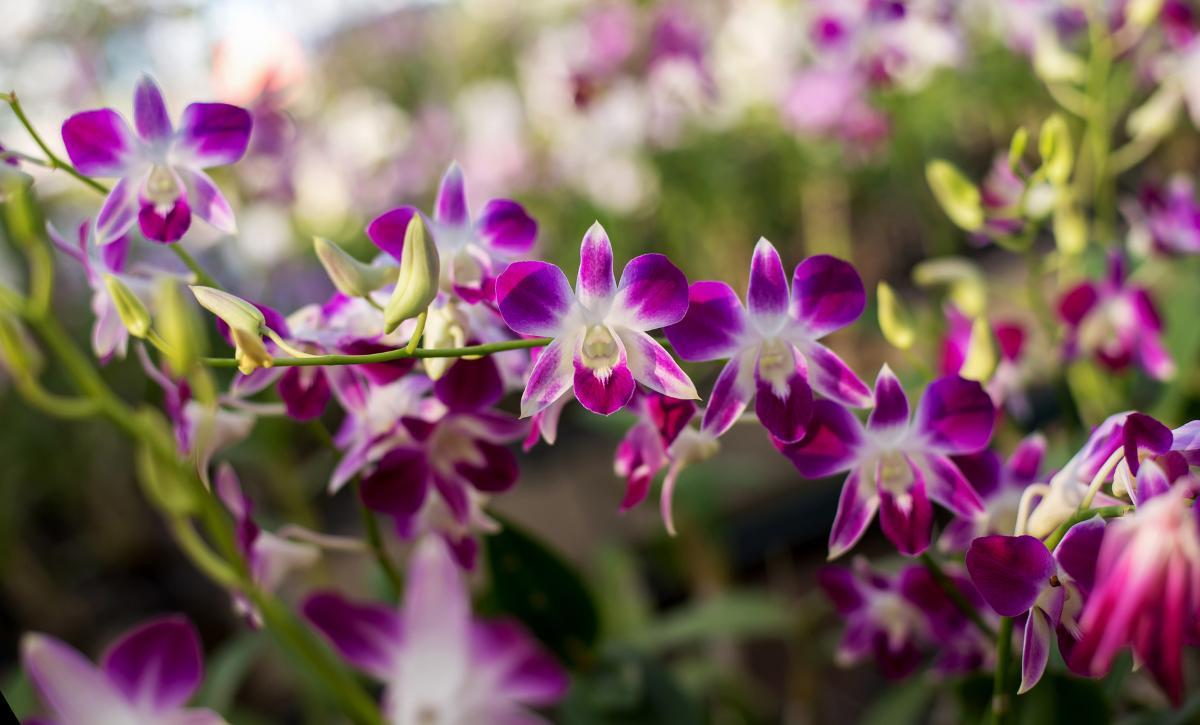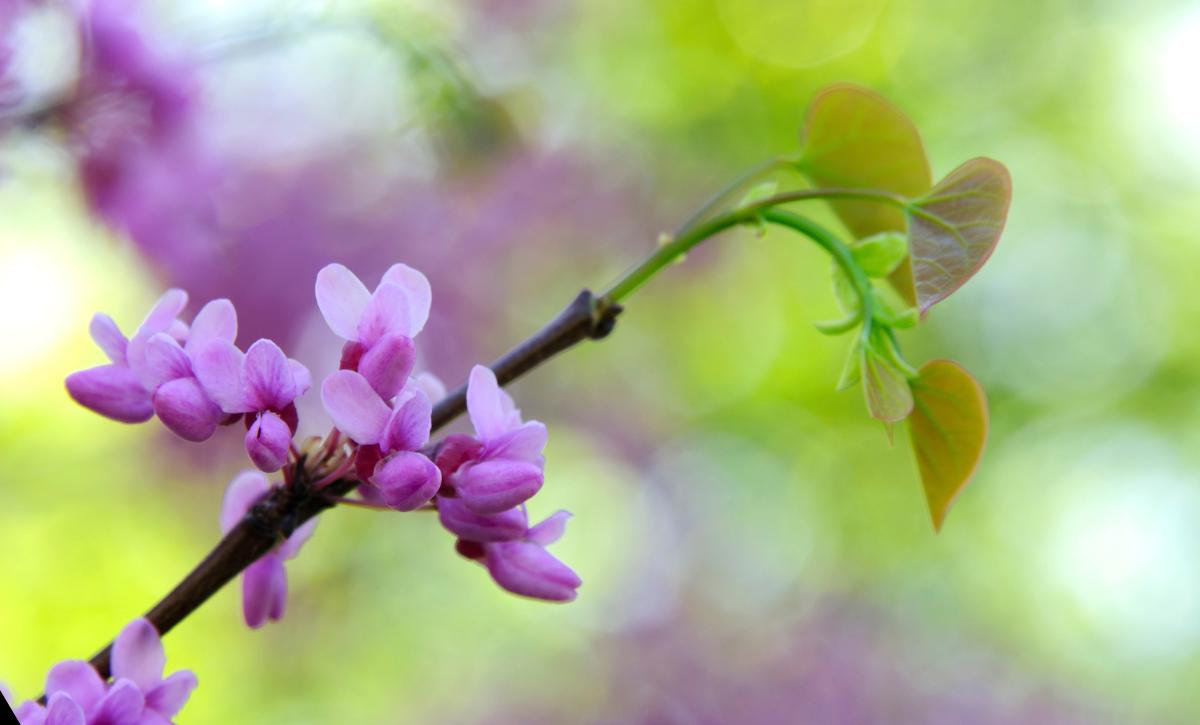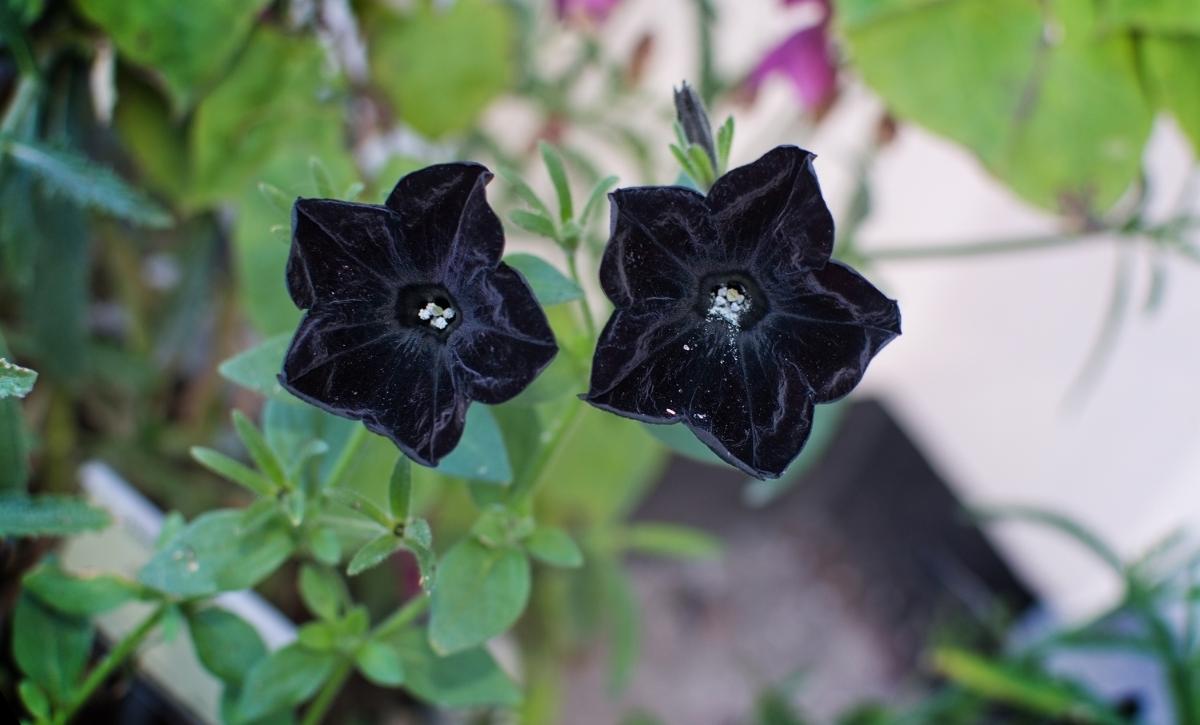Known for its trumpet-shaped flowers that may come in pink, red or white, the Rio plant is one unique ornamental plant to grow.
The plant blooms from March to November, but the flowers can last from mid-May to October. Even though the Rio Dipladenia may seem bushy, it has a vining habit that makes it suitable for growing in hanging baskets.
The pointed, glossy and somewhat narrow leaves add to the beauty of this ornamental plant.
Here is all that you need to know about the Rio Dipladenia!
| Scientific name: | Dipladenia sanderi (recently updated to Mandevilla sanderi) |
| Native habitat: | Brazil |
| Size: | About one to two feet |
| Growth rate: | Moderate |
| Toxicity: | Non-toxic |
Facts About the Rio Dipladenia
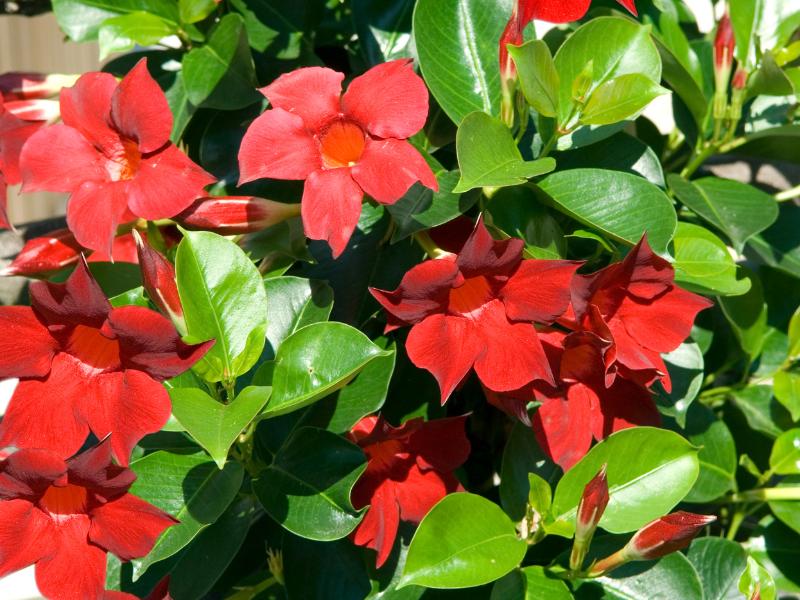
Many people confuse the Dipladenia and Mandevilla vines with being the same thing. While this is true, it is also not!
Both vines belong to the same genus. However, the Mandevilla vines have broader leaves and flowers as compared to the Dipladenia.
Another notable difference is in their growth habits. While both are vining plants, the Mandevilla vines send more upward shoots than the Dipladenia, which is more bush-like and can be grown without staking.
The vines belong to the Apocynaceae family, also known as dogbane, since many of the plants from this family were once used as dog poison. However, neither the Dipladenia nor the mandevilla is toxic to pets.
The Rio vine is also known as the Brazilian Jasmine. This is because the scent mimics Jasmine. The plant is highly fragrant, attracting many pollinators. Many plants from the family Apocynaceae possess this quality, such as the Stephanotis floribunda, also known as Madagascar jasmine.
Taking Care of a Rio Dipladenia Plant
Rio flowers thrive in tropical climates and, as such, should be grown in warm areas or indoors; if you reside in a cold region.
The Dipladenia is, however, a low-maintenance plant and will only need full sun, a well-drained medium and some water to thrive.
To transform the plant, whether growing it indoors or outdoors, there are several factors that you should consider, such as repotting, fertilization, propagation and where the plant is grown — whether it’s in a pot or the ground.
In the sections below, we will discuss all that you need to know when growing the Rio Dipladenia!
Growing the Rio Dipladenia in Pot vs. in Ground
Depending on your preference, this plant can be grown in a pot or on the ground.
The Rio is an ideal choice for pots or container plants since it grows slowly. Hence, there’s no need for repotting often.
Since it’s a vining plant, it’s preferable to grow them in containers for a while and then train the tendrils to suit your design. Alternatively, you can let the vines hang from a planter, which may be even more aesthetically pleasing.
Growing these plants in containers is also advantageous to those living in cold areas since you can take them inside during the cold winter and out in the spring.
As for growing them in the ground, nothing can stop you other than the weather and, well, of course, the resolve!
Light Requirements
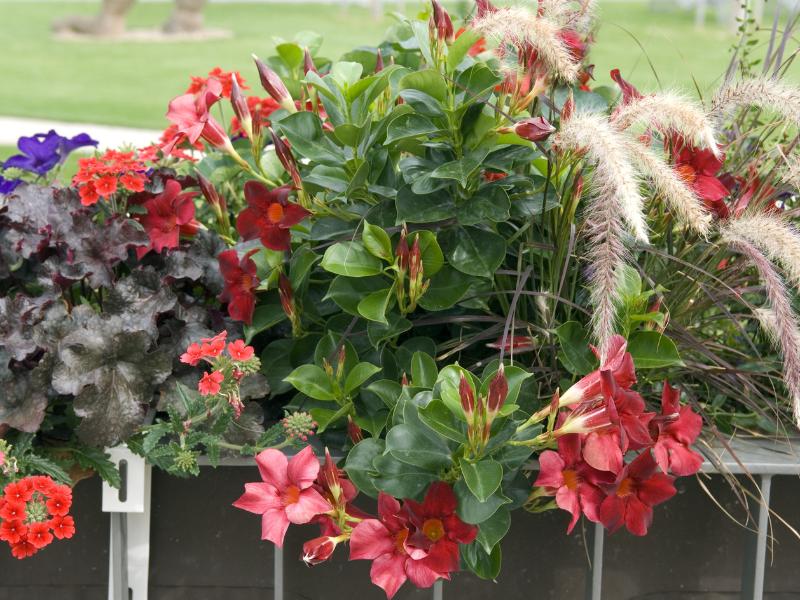
Dipladenia requires 6-8 hours of sunlight per day to thrive. When growing it indoors, make sure that the plant is in a place where it receives a minimum of 4 hours of natural light a day.
When growing in hot climates, the plant doesn’t need much sunlight and exposing it to harsh light could end up burning the leaves or flowers, so it should be sheltered.
You can also place the plant in a place where it receives the morning and late afternoon sunlight as the light intensity is not as strong.
Water and Humidity
Due to the ability of the Dipladenia to store water in its tubers, it requires little watering despite thriving in tropical climates.
The soil should be let to dry in between watering to ensure that the plant is not waterlogged and minimize the risk of fungal diseases and root rot.
The plant is increasingly easy to care for in humid regions since it can survive rainfall without any hassle!
Still, it will need irrigation if the climate becomes drier or the topsoil dries about 2-3 inches from the top.
One crucial factor to consider is the type of water that is used for irrigation.
While tap water may be fit for human consumption as per the EPA standards, it doesn’t make a thirst quencher for plants due to the amount of chlorine in the water.
Distilled water is the best option for plants since it has minimal or no traces of chlorine and other harmful minerals.
It is, however, possible to use tap water on plants if they’re left out in the open for 24 hours to let the chlorine evaporate.
Humidity
Humidity is crucial in the survival of some plants, but with the Dipladenia, you don’t have to worry about it!
That’s right! This plant doesn’t need extra humidity to survive, so you won’t have to stress about raising the humidity levels.
Since water absorption is mainly through the roots, there’s no need for misting the plant or investing in humidifiers.
In scorching weather, the plant must be watered regularly if placed outside due to the increased transpiration rate.
Temperature
Unlike with humidity, this is a whole new ball game! The Rio Dipladenia cannot survive the winter cold and thrives in zones 9 through 11; it can also do well in zone 8.
There is, however, a chance that the plant will die in the winter and rejuvenate in the spring. This comes at the cost of your plant shrinking in size.
Sheltering the plant indoors when temperatures are lower than 45℉ will ensure it survives.
Even at night, the plant will need warm temperatures above 65℉.
Be mindful of the placement of the plant. Keeping it near windows, heaters or air vents will cause the plant to be stressed out due to the temperature inconsistency.
Soil and Fertilizer
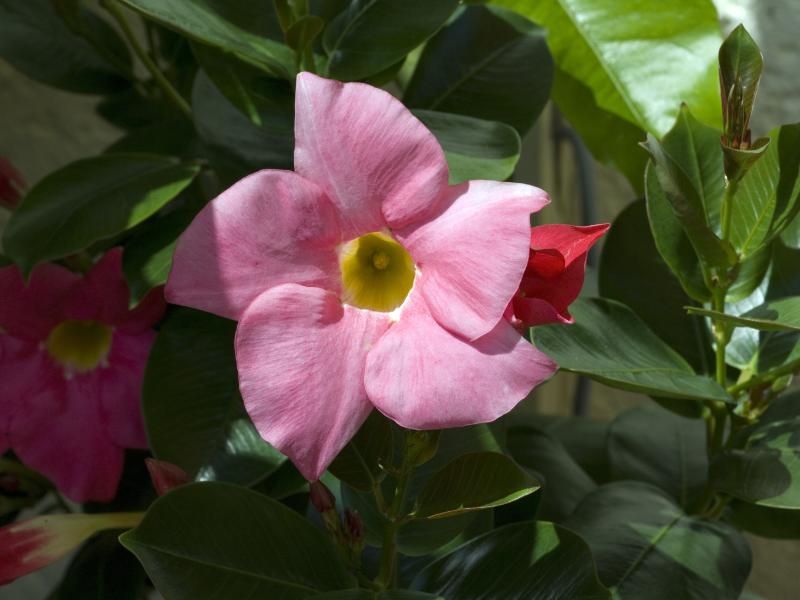
If you’ve ever grown outdoor petunias, then you’re in luck! The Rio plant requires a similar growing medium.
The Dipladenia does well in well-aerated and well-drained soils. For heavy substrates, you can amend them with compost or hummus. Loam-based composts mixed with some sand are an excellent choice for growing this flower.
If you are unsure about the soil, creating a DIY planting mix is easy!
You only need peat moss, perlite, sand, and high-quality potting soil. And you’re ready to grow your Rio plant!
One key factor to note is that extreme drainage will increase the frequency of watering, which is tiring! If your soil is draining quickly, adding some compost or humus will increase water rendition.
Compost and humus increase drainage in heavy soils, making sandy soils more moisture retentive with no water logging.
Lastly, mulching is crucial to minimize the rate of evaporation and control temperature. You can mulch the plant by adding a thin layer of straw or bark to increase warmth in winter and keep the plant cool in summer.
Fertilizing
Since the Rio Dipladenia is not a heavy feeder, fertilizing it once a month with a liquid fertilizer will do just fine.
To make things even easier, you can apply the fertilizer during the growing season of the plant in early spring. Using a slow-release fertilizer will ensure the plant gets nutrients all year round.
Avoid fertilizing the plant in the winter since this is the dormant season when the plant can’t absorb additional nutrients.
Balanced fertilizers will suffice fertilizers with a high ratio of phosphorus, such as 7-9-5 or 6-10-4, to inspire flowering.
You should pay attention to watering during the process of fertilization. Irrigation reduces the risk of scorching the roots.
Since the Rio Dipladenia is not a heavy feeder, fertilizing it once a month with a liquid fertilizer will do just fine.
To make things even easier, you can apply the fertilizer during the growing season of the plant in early spring. Using a slow-release fertilizer will ensure the plant gets nutrients all year round.
Avoid fertilizing the plant in the winter since this is the dormant season when the plant can’t absorb additional nutrients.
Balanced fertilizers will suffice fertilizers with a high ratio of phosphorus, such as 7-9-5 or 6-10-4, to inspire flowering.
You should pay attention to watering during the process of fertilization. Irrigation reduces the risk of scorching the roots.
Repotting
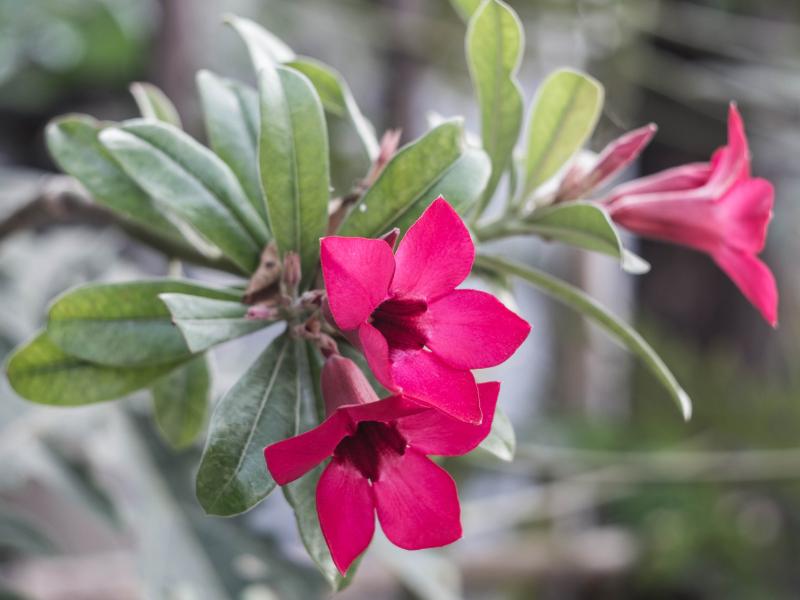
Despite the slow growth of the Rio Dipladenia, repotting should be done once a year to replenish soil nutrients and reduce salt buildup caused by fertilization.
For best results, repot the plant once it wakes from dormancy. This technique significantly reduces the chances of transplant shock and allows the flower to recover before the dormant seasons begin.
The repotting process is simple. You will need a soil mix, gloves, and a new pot (make a large-sized pot if your plant is still growing).
First, you should make sure that the plant is well-hydrated before moving it to its new residence.
Transplant shock is common in repotted plants, and it reduces the ability of the plant to absorb water. Hydrating before repotting will solve this issue.
Now, gently remove the soil around the plant and take the plant out.
In the new pot, place some fresh medium and fill up the container with the remaining soil. Don’t forget to thoroughly water the plant so it’s off to a good start!
Propagation
One of the best things about the Rio Dipladenia vine is it’s easily propagated through cuttings. Moreover, the stems root easily, so the cuttings can be propagated in no time to create a beautiful garden.
Here are the basic steps in propagating this plant:
Step 1: Choose a healthy stem and make a cut that’s about 6 inches. Ensure that you make the incision at 45⁰ to improve the absorption rate.
Step 2: To speed up the process, dip the cuttings in a rooting hormone.
Step 3: Create a seed starting mix by mixing equal amounts of perlite, peat moss and horticultural sand. You can also buy a ready-made seed starting mix.
Step 4: Water the cuttings and move them to a well-lit area. Cover the pots with a plastic wrap that will increase humidity to increase the chances of success.
Step 5: Ensure that the temperatures are right. This is between 60℉ at night and 75℉ during the day. You can use a heating mat to regulate temperatures.
Step 6: Water the cuttings regularly whenever the soil seems dry. If the pots are covered, lift the dome or plastic sheet to allow fresh air to circulate every now and then.
Step 7: Once the plant has started showing new growth, wait for a little longer until the rooting system has developed and repot in a larger pot.
Pruning
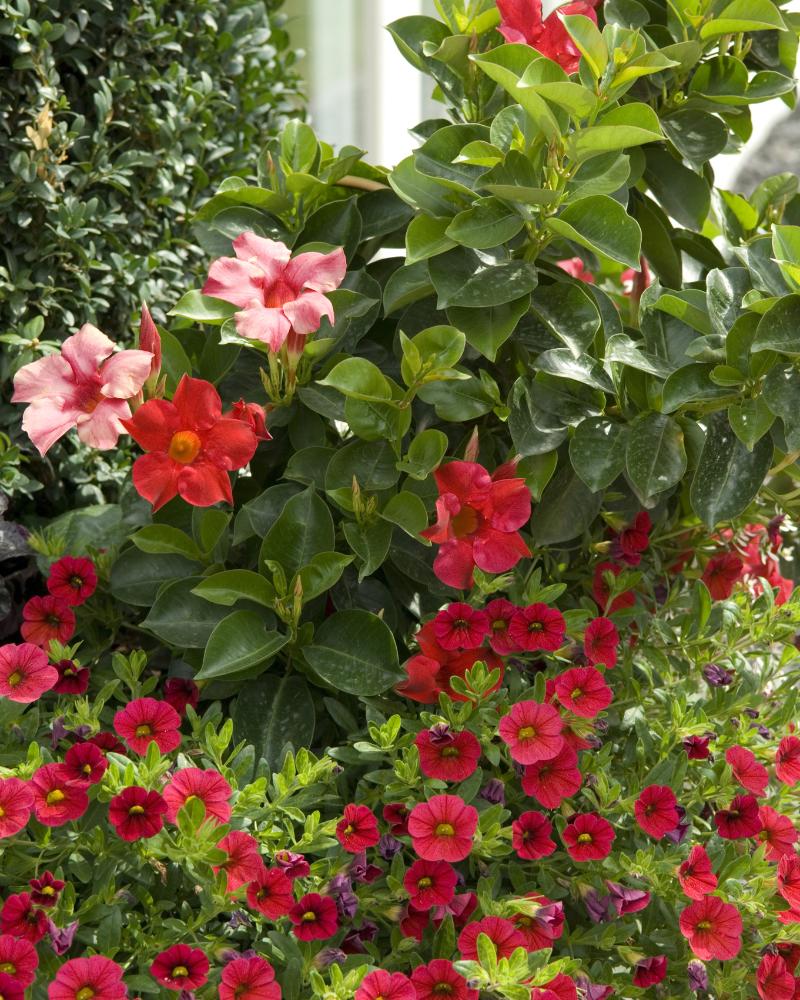
A crucial part of the care routine of the Rio plant is pruning. This not only keeps the plant in shape but also increases the airflow and allows light to reach the inner parts.
It can indeed be tiring, but with the right tools, such as secateurs, you can have your plant in shape in no time!
When pruning, cut the top and side shoots to 2-3 leaves. Ensure that the main stem isn’t pruned, which could hinder the plant’s growth.
Pruning the Rio Dipladenia is easy since the pruned leaves or flowers don’t need deadheading; they fall off on their own. This is actually good since they can double up as unconventional compost!
Pests
Even though the Rio plant is not resistant to common plant pests, such as spider mites and aphids, there’re a couple of ways to prevent pests from infesting your plant.
Pests are likely to attack unhealthy plants that aren’t receiving enough nutrients or important elements such as water and sunlight. So, make sure that your plant is well taken care of.
If you’re lucky, you may never have to deal with pests! But if they do come your way, here is how to deal with them.
Introduce some ladybugs
Ladybugs are the mortal enemies of aphids and mites! Introducing some to your garden will help deal with infestation of these pests.
Rubbing Alcohol and neem oil
Pests can also be removed by applying some rubbing alcohol, Q-tip or neem oil to the infested leaves or branches.
Pesticide
If the plant is severely infested, removing the pests by Q-tip or oils could take, well, forever. In this case, using pesticides to remedy the situation is better.
Diseases
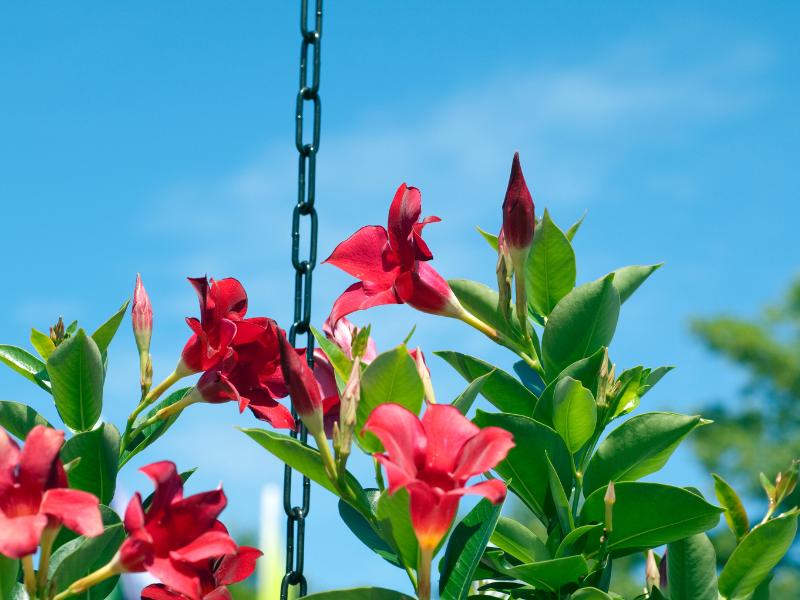
A common disease that affects the Rio plant is Anthracnose. This disease exhibits itself as brownish leaf spots and lesions. In extreme cases, the leaves may start to fall off.
The good news is there’s a way to stop this problem. Anthracnose results from wet leaves, so avoid splashing, overhead watering and wetting the plant leaves.
In case you’re too late to prevent it, isolate any infected plants from healthy ones and use a fungicide to treat them.
Frequently Asked Questions
There are several concerns that people have about the Rio Dipladenia.
Here are some frequently asked questions.
1. Is the Rio plant a perennial?
Depending on the weather conditions, the Rio Dipladenia can be an annual or a perennial.
In its native habitat, the plant is an evergreen perennial.
Considering that the plant barely survives cold temperatures, it should be grown as an annual plant in such conditions. Alternatively, shelter the plant over winter, and take it outside when the weather warms up.
2. How long do Rio’s flowers last?
Blooms in the Rio Dipladenia last about two weeks, but the good news is the plant flowers for most of the year.
That’s right! In normal conditions, the Dipladenia will flower from May to October. In even better conditions, they plant flowers from March to November!
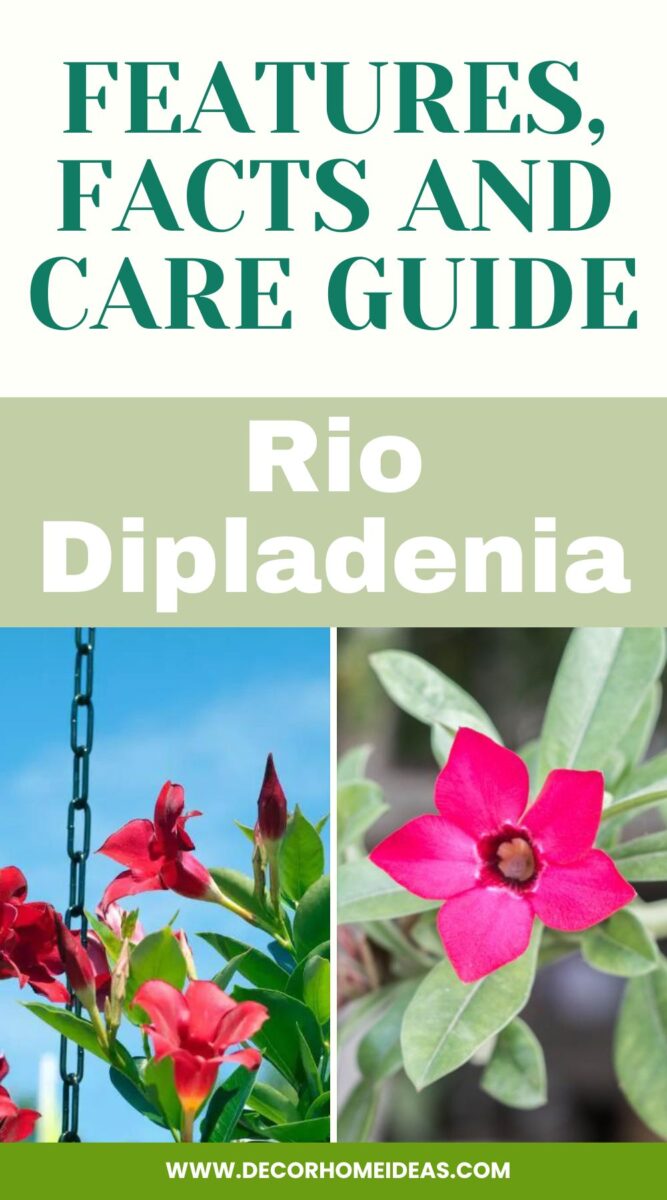
Bottom Line
As an ornamental plant, the Rio Dipladenia is a jewel in any garden. This article has examined all you need to know about the plant and detailed its care guide.
With the knowledge you now have on how to take care of the plant, its propagation methods and how to prevent or deal with common pests that affect it, it’s time.
Time for what, you ask? Time to turn your garden into a paradise! Good luck!

